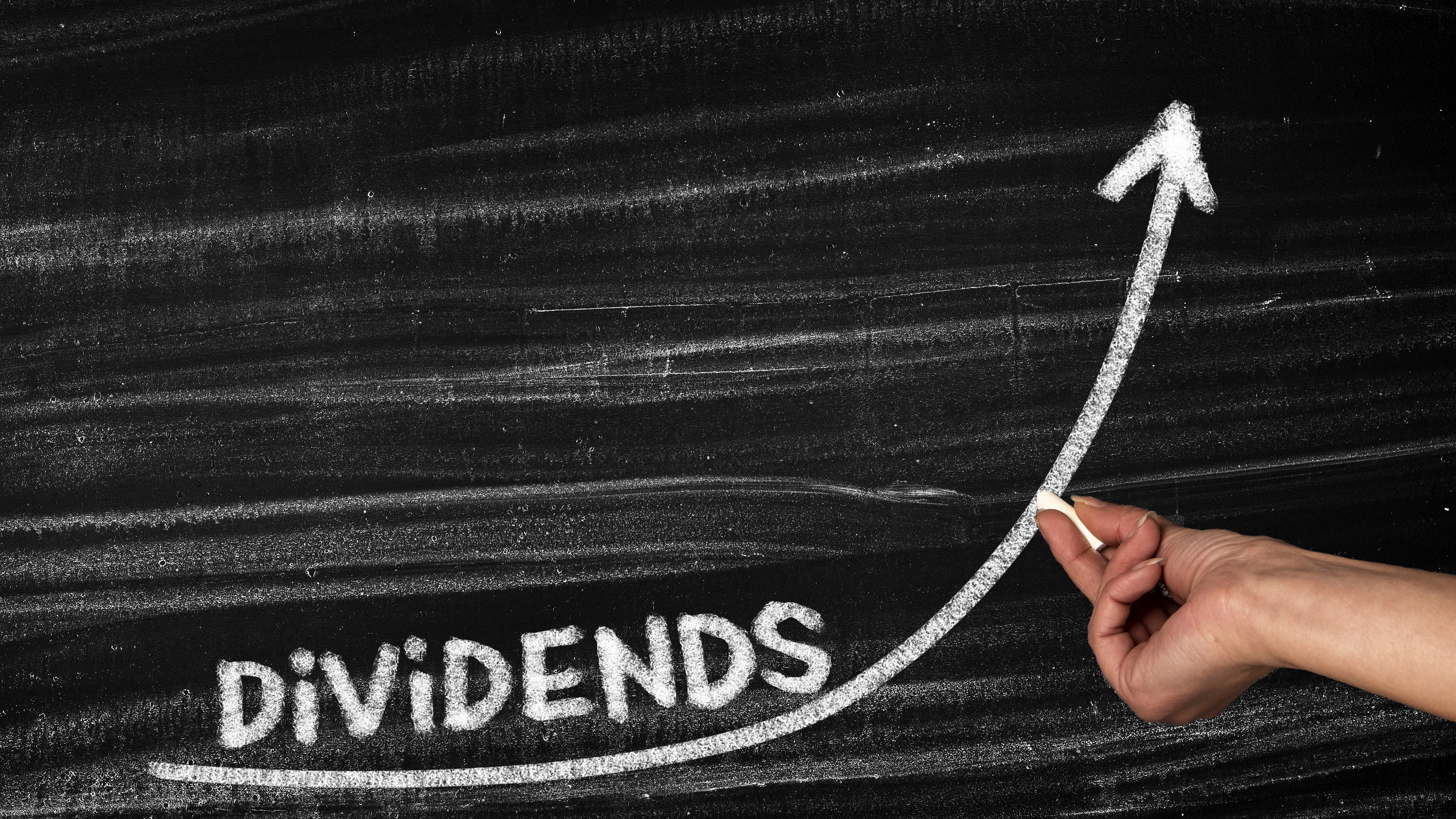Looking Beyond Dividends: How to Maximize Your Yield
When making investing decisions, considering shareholder yield, rather than only dividend yield, could improve your results.


Income investors love dividends. They own a portfolio of world-class businesses, sit back and let the cash roll into their accounts. Sounds great, right? It pretty much is.
But what if I told you there’s an even better way to invest? Instead of focusing purely on dividend yield, there is a broader metric that can improve your results that’s worthy of your attention: shareholder yield.
When it comes to analyzing stocks, there’s rarely anything new under the sun. But shareholder yield is a relatively new concept. The term was first introduced in the 2005 paper “The Case for Shareholder Yield as a Dominant Driver of Future Equity Returns.”
From just $107.88 $24.99 for Kiplinger Personal Finance
Become a smarter, better informed investor. Subscribe from just $107.88 $24.99, plus get up to 4 Special Issues

Sign up for Kiplinger’s Free Newsletters
Profit and prosper with the best of expert advice on investing, taxes, retirement, personal finance and more - straight to your e-mail.
Profit and prosper with the best of expert advice - straight to your e-mail.
The idea is straightforward. A company has a finite number of ways it can use its free cash (that is, cash that’s available after paying for planned capital investments, taxes and interest payments). The company can use free cash flow to:
- Pay cash dividends
- Repurchase stock
- Reduce debt
- Acquire another business
- Reinvest in the company
The last two applications involve growth. And if a company can generate a strong return on reinvested capital, that’s great. But income investors are rightly concerned with how profits get distributed to them, the company’s shareholders.
It’s the first three uses of cash (paying dividends, repurchasing stock and paying down debt) that comprise shareholder yield. Let’s take a closer look at each one:
Dividends. Most investors are familiar with this type of shareholder return. A company will distribute some of its cash to shareholders. Usually, American companies do this quarterly. Many international companies pay out once or twice per year. The term “dividend yield” simply refers to how much the company is paying out in annual dividends relative to its stock price.
As an example, retailer Target (TGT), has paid $4.36 per share in dividends over the past 12 months. Its current stock price is $108.21. That equates to a trailing 12-month dividend yield of 4.0%. That’s well over double the dividend yield of the S&P 500.
In addition to regular dividends, some companies further reward shareholders with special dividends — one-off payments akin to getting an unexpected bonus check. This is a pretty common practice among energy and other commodity companies, but certainly not exclusive to them. Costco (COST), as an example, has paid out four special dividends since 2011.
Stock repurchases. These are also known as share buybacks. This is when a company repurchases its own shares from existing shareholders. Stock repurchases benefit current shareholders who are looking to reduce their ownership (it provides additional liquidity). And it can benefit shareholders who don’t want to liquidate, because when the number of outstanding shares is reduced through repurchases, that means investors who keep their shares end up owning a larger percentage of the company (and are entitled to a bigger piece of the profit pie).
Online marketplace operator Etsy (ETSY) is a company that could easily be looked over by income investors. It doesn’t pay a dividend at all. Instead of paying cash to shareholders, it has spent over $576 million buying back stock over the past 12 months.
Debt reduction. This is the component of shareholder yield that isn’t particularly intuitive. It’s certainly a more subtle way of rewarding shareholders. By reducing interest costs, companies can funnel more future profits to shareholders. Debt reduction also increases the percentage of the enterprise value that is owned by equity shareholders — just like when a homeowner pays down their mortgage, the net value of their home goes up (value of home – mortgage debt = equity value).
Airline operator Alaska Air (ALK) doesn’t pay a dividend, and share buybacks have been modest. Instead, it has been focused on paying down debt, to the tune of $295 million over the past 12 months.
When you combine these three components — dividends, buybacks and debt reduction — you get shareholder yield. The three companies used to demonstrate these components operate very different businesses. How they allocate their cash varies quite a bit as well. Yet, when looked at through the lens of shareholder yield, they have a lot in common.
| Stock | Dividend yield (+) | Repurchase yield (+) | Debt reduction yield (=) | Shareholder yield |
|---|---|---|---|---|
| Target | 4.0% | 5.6% | -1.9% | 7.7% |
| Etsy | 0% | 7.4% | 0.1% | 7.5% |
| Alaska Air | 0% | 1.3% | 6.7% | 8.0% |
Source: Bloomberg, SAM analysis. Data as of 11/13/23.
If you’re an investor who’s looking only at dividend yield, you’re missing the broader shareholder return picture. At SAM, we’ve found that approaches emphasizing shareholder yield can outperform the broader market over time. That’s why shareholder yield is a big priority in our Income strategy. If you’re investing on your own, we highly recommend going the extra mile to calculate shareholder yield. Or if you have an adviser, it’s worth finding out if they’re making those calculations on your behalf.
Stansberry Asset Management ("SAM") is a Registered Investment Advisor with the United States Securities and Exchange Commission. File number: 801-107061. Such registration does not imply any level of skill or training. This presentation has been prepared by SAM and is for informational purposes only. Under no circumstances should this report or any information herein be construed as investment advice, or as an offer to sell or the solicitation of an offer to buy any securities or other financial instruments.
Related Content
- (A Little) Greed Is Good When It Comes to Investing
- These Energy ‘Middlemen’ Are an Income Lover’s Dream
- Five Questions (and Answers) for Long-Term Investors
- Focusing Too Much on a Bull Market Could Lead You Astray
- Mutual Funds Reality Check: Are You Really Diversified?
Profit and prosper with the best of Kiplinger's advice on investing, taxes, retirement, personal finance and much more. Delivered daily. Enter your email in the box and click Sign Me Up.

Michael is a Portfolio Manager and Deputy Chief Investment Officer at SAM, a Registered Investment Advisor with the United States Securities and Exchange Commission. File number: 801-107061. He sources investment opportunities and conducts ongoing due diligence across SAM’s portfolios. Michael co-manages SAM’s Income and Tactical Select strategies. Prior to joining SAM, Michael worked with high-net-worth private clients for the largest independent wealth management firm in the United States. He was also a senior analyst for one of the largest investment-grade bond managers in America. Michael joined SAM in 2017.
-
 Stocks Extend Losing Streak After Fed Minutes: Stock Market Today
Stocks Extend Losing Streak After Fed Minutes: Stock Market TodayThe Santa Claus Rally is officially at risk after the S&P 500's third straight loss.
-
 What Bilt Cardholders Need to Know as Wells Fargo Exits the Program
What Bilt Cardholders Need to Know as Wells Fargo Exits the ProgramA major shake-up in the Bilt Rewards program could affect your credit card, rent rewards and points strategy heading into 2026.
-
 3 Major Changes to the Charitable Deduction in 2026
3 Major Changes to the Charitable Deduction in 2026Tax Breaks About 144 million Americans might qualify for the 2026 universal charity deduction, while high earners face new IRS limits. Here's what to know.
-
 I'm a Financial Pro: You Really Can Make New Year's Money Resolutions That Stick (and Just Smile as Quitter's Day Goes By)
I'm a Financial Pro: You Really Can Make New Year's Money Resolutions That Stick (and Just Smile as Quitter's Day Goes By)The secret to keeping your New Year's financial resolutions? Just make your savings and retirement contributions 100% automatic.
-
 Domestic vs Offshore Asset Protection Trusts: A Basic Guide From an Attorney
Domestic vs Offshore Asset Protection Trusts: A Basic Guide From an AttorneyLearn the difference between domestic asset protection trusts and foreign or offshore asset protection trusts to help you decide what might work best for you.
-
 As We Age, Embracing Our Own Self-Doubt Can Be a Gift: A Cautionary Tale About Elder Financial Abuse
As We Age, Embracing Our Own Self-Doubt Can Be a Gift: A Cautionary Tale About Elder Financial AbuseAn aging couple hired a company that illegally required large deposits, and then they decided to stick with the company even after an employee stole from them.
-
 Now That You've Built Your Estate Planning Playbook, It's Time to Put It to Work
Now That You've Built Your Estate Planning Playbook, It's Time to Put It to WorkYou need to share details with your family (including passwords and document locations) and stay focused on keeping your plan up to date.
-
 I'm a Wealth Adviser: These 10 Strategies Can Help Women Prepare for Their Impending Financial Power
I'm a Wealth Adviser: These 10 Strategies Can Help Women Prepare for Their Impending Financial PowerAs women gain wealth and influence, being proactive about financial planning is essential to address longevity and close gaps in confidence and caregiving.
-
 I'm a Financial Planning Pro: This Is How You Can Stop These 5 Risks From Wrecking Your Retirement
I'm a Financial Planning Pro: This Is How You Can Stop These 5 Risks From Wrecking Your RetirementYour retirement could be jeopardized if you ignore the risks you'll face later in life. From inflation to market volatility, here's what to prepare for.
-
 Are You Hesitating to Spend Money You've Spent Years Saving? Here's How to Get Over It, From a Financial Adviser
Are You Hesitating to Spend Money You've Spent Years Saving? Here's How to Get Over It, From a Financial AdviserEven when your financial plan says you're ready for a big move, it's normal to hesitate — but haven't you earned the right to trust your plan (and yourself)?
-
 Time to Close the Books on 2025: Don't Start the New Year Without First Making These Money Moves
Time to Close the Books on 2025: Don't Start the New Year Without First Making These Money MovesAs 2025 draws to a close, take time to review your finances, maximize tax efficiency and align your goals for 2026 with the changing financial landscape.